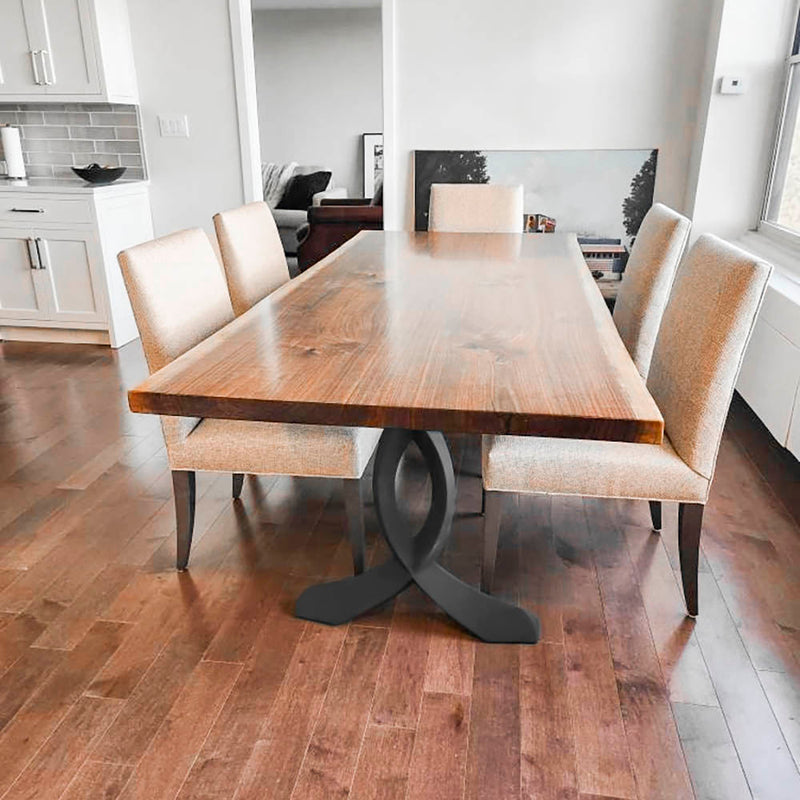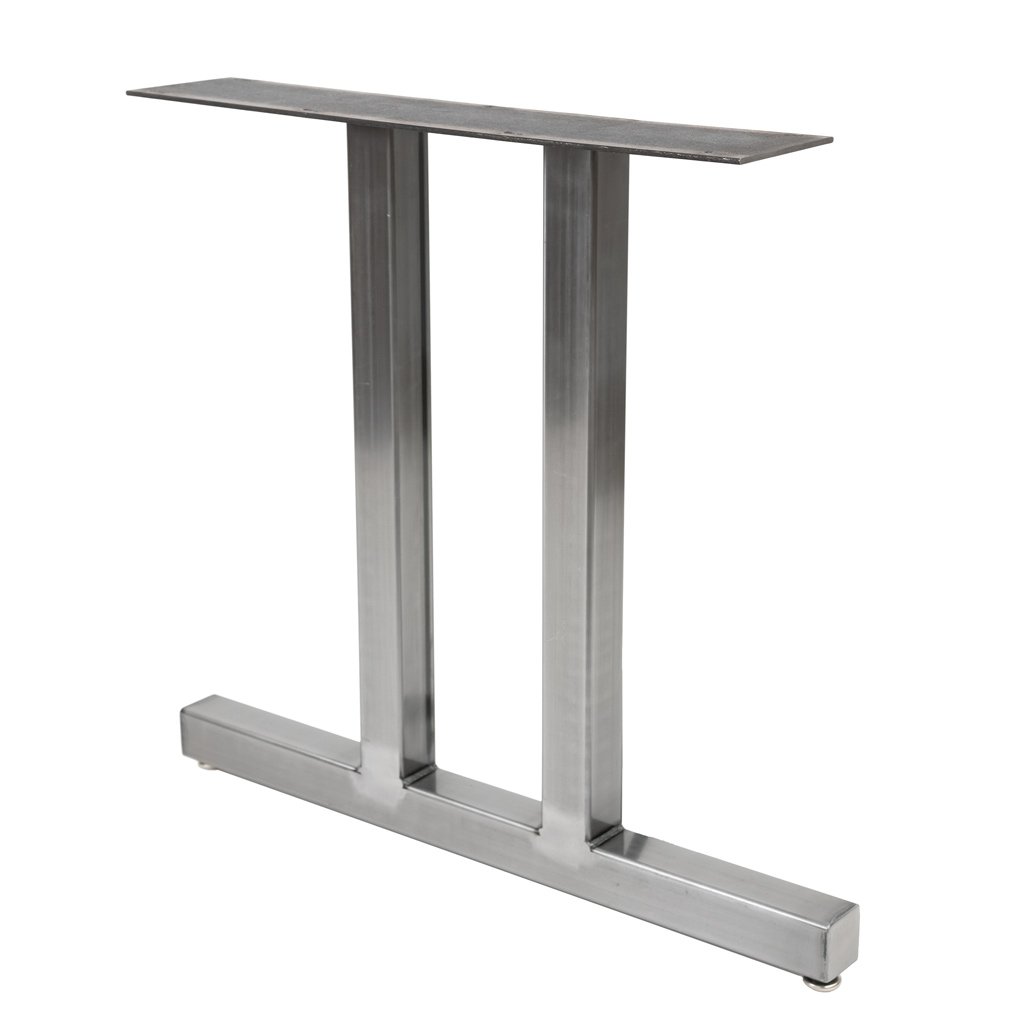Unique Dining Room Table Legs That Will Elevate Your Dining Area
Unique Dining Room Table Legs That Will Elevate Your Dining Area
Blog Article
From Traditional to Modern: Discover the Perfect Dining-room Table Legs for Your Design
The choice of eating space table legs plays a pivotal function in specifying the overall character of your room, linking the space in between standard craftsmanship and modern aesthetic appeals. While timeless designs such as cabriole and transformed legs evoke a feeling of ageless elegance, modern styles like barrette and geometric options offer a possibility for striking visual interest. Evaluating the right balance in between these styles calls for a nuanced understanding of your existing décor and personal taste. As you think about these components, the question continues to be: how can you effortlessly integrate these varied leg styles to create a harmonious dining experience?
Comprehending Table Leg Styles
The variety of dining-room table leg designs can significantly influence both the looks and capability of the room. Each leg style adds one-of-a-kind functional features and visual elements, providing to diverse style preferences and usage demands. Recognizing these designs is critical for picking the best eating table that lines up with your total interior decoration vision.
For example, tapered legs offer a clean, timeless appearance that can boost an area's elegance, while stand bases provide stability and maximize legroom, making them suitable for smaller spaces. Barrette legs, a hallmark of mid-century modern style, present a commercial style, permitting for a ventilated, open feeling. In a similar way, trestle legs stimulate rustic beauty, giving durable assistance and a sense of eternity.
Wooden legs can bring warmth and appearance, whereas metal options typically communicate a streamlined, modern ambiance. Inevitably, recognizing table leg designs is important for creating a cohesive dining area that shows personal style while ensuring practicality and convenience.
Standard Table Leg Options
When picking dining room table legs, typical alternatives often symbolize classic elegance and workmanship. These layouts mirror an abundant heritage and a dedication to top quality, making them ideal for those that value traditional aesthetics.
One of the most renowned typical leg styles is the cabriole leg, defined by its graceful rounded form. This layout typically features attractive carvings and is most commonly found in Queen Anne and Chippendale furnishings. One more preferred alternative is the transformed leg, which flaunts a collection of smooth, rounded shapes that offer a classic look while keeping stability.
Additionally, the straight leg, while straightforward, offers a unadorned and durable structure that can blend effortlessly with a range of tabletop designs. For those attracted to ornate outlining, claw-and-ball feet legs stimulate a sense of splendour and can function as a spectacular focal factor in any kind of dining space.
Finally, pedestal bases, although not purely legs, supply a different conventional alternative that enables for enough legroom and can be magnificently carved. Each of these standard leg designs adds to the general ambiance of a dining-room, marrying function with visual appeal.

Modern Table Leg Layouts
Modern table leg layouts use a diverse range of designs that highlight innovative products and tidy lines. These styles commonly prioritize performance while working as striking prime focus within a dining area. Minimal aesthetic appeals prevail, with legs crafted from products such as metal, glass, and engineered timber, which add to a contemporary and ventilated feel.
One popular layout is the hairpin leg, defined by its slender, tapered framework that supplies security without frustrating the table top (dining room table legs). This style is typically found in mid-century modern-day furniture and can easily enhance different table forms. An additional trend is making use of geometric forms, where legs might tackle angular or unbalanced forms, including aesthetic rate of interest home and a touch of creativity

Blending Styles for Unique Spaces
Commonly, homeowners look for to develop one-of-a-kind dining spaces that mirror their personal style by blending various style aspects. This method permits the incorporation of diverse visual appeals, leading to a harmonious yet distinct environment. For instance, matching a rustic wood table with sleek, modern steel legs can produce a captivating contrast that boosts the area's general allure.
Additionally, integrating vintage table legs with contemporary table tops can evoke a sense of history while keeping a modern-day perceptiveness. Such combinations not only display specific taste however likewise urge creativity, allowing house owners to curate a room that really feels both personal and welcoming.
Color plays an essential duty in this blending procedure; picking table legs that complement or comparison with the existing color pattern can boost aesthetic interest. For instance, whitewashed legs can soften the daring of a dark table surface area, producing a well balanced aesthetic.
Tips for Selecting the Right Legs
Choosing the right table legs is essential for achieving both capability and visual appeal in your eating area. Begin by considering the general style of your room. Typical settings benefit from legs that feature intricate makings or turned styles, while contemporary spaces may require sleek, minimalist styles.
Following, evaluate the elevation and security of the legs. dining room table legs. Typical table vary between 28 to 30 inches in elevation, so make certain the legs enhance this dimension for comfort. In addition, robust materials, such as wood or metal, can boost security and long life
Assess the leg form too-- choices include directly, tapered, or pedestal designs. Straight legs use a classic look, while conical legs can include a touch of style. Pedestal bases offer enough legroom and are optimal for smaller spaces.
Conclusion
In recap, picking the suitable eating room table legs requires basics careful factor to consider of both modern and traditional styles. By balancing leg design, height, and product with the total décor, a cohesive and welcoming environment can be achieved.
The selection of dining room table leg designs can considerably affect both the visual appeals and performance of the space. Eventually, recognizing table leg designs is essential great post to read for developing a cohesive dining area that shows personal design while guaranteeing usefulness and comfort.One of the most legendary traditional leg designs is the cabriole leg, identified by its graceful curved form. Straight legs offer a classic appearance, while conical legs can add a touch of beauty.In summary, selecting the perfect dining room table legs calls for careful factor to consider of both modern-day and standard styles.
Report this page